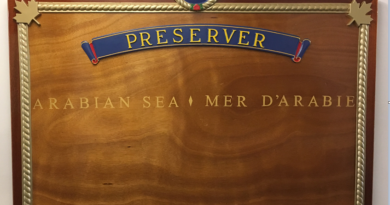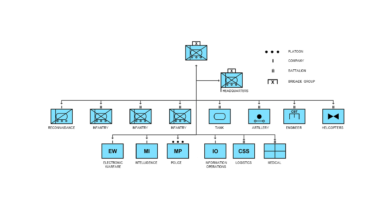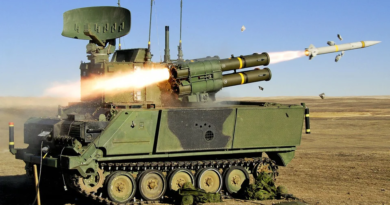Pals and Buddies – Canada, the First World War, and Vimy
On April 2, 2017, the Dalhousie Undergraduate History Society1 invited Honorary Colonel John Boileau2 to give a lecture entitled Canada and the First World War – A Remarkable Record. The timing of the presentation is apropos as the 100th anniversary of the Battle of Vimy Ridge3, April 9-12, 1917, is fast approaching.
Similar commemorative Vimy Ridge ceremonies4, events, plays, and exhibits will be taking place all across Canada in the coming days. Two main ceremonies will take place in Ottawa and France. The Nova Scotia Highlanders who stormed Hill 145, now the site of the famous Vimy memorial, hopefully would be amazed at how that unholy landscape was transformed into an oasis of tranquility and reverence. Even the site’s most infamous visitor was awed and moved by the Canadian monument5.
Colonel Boileau took a couple of hours to briefly touch on Canada’s contribution and sacrifices during the Great War. At first, he noted, he was in a quandary as to how to approach the vast topic. There were many options such as approaching the project anecdotally, sequentially, nationally or by historical significance. As he termed it, he took a typical Canadian tactic and came at the issue from all angles to meet in the centre. It’s worth mentioning his opening joke of ‘Why did the Canadian cross the road?’ with the reply, ‘To get to the middle!’ Narrowing down the immense amount of information available, he described the major battles Canadians fought in: Ypres, Somme, Vimy Ridge, Passchendaele, Amiens and Canada’s 100 Days6. He spoke of the stalwartness of Canadian troops who stood resolute in the face of German chlorine attacks at Ypres. This brand new method of warfare was used first to hit the French lines causing panic and confusion. The Germans hit the lines again with clouds of deadly, green gas but the Canadians had produced a counter-method to the poison by breathing through cloth they had urinated on. The Canadian Corps were often up front and centre, first in the line of German fire.
Canadians were known for their inventiveness, ingenuity and as fearsome shock troops. Colonel Boileau described the Canadian innovations such as the Motor Machine Gun Brigade, the practice of trench raiding, meticulous battle planning and preparation, and throwing off the Germans by not always preceding an attack with artillery. The Allies soon made the Canadians their go-to troops, to the point that their movements had to be disguised so as not to tip off the Germans of an imminent attack. Canadian soldiers, time and time again, proved themselves on the fields of battle. Of course in Canadian mythology, it was the battle of Vimy Ridge where over the course of four days our nation was born. The Colonel even had a letter from one of the young soldiers who opined that the battle had given birth to Canada as a nation. Sadly, not long after, the soldier’s parents received a telegram with news of his death.
There were a few powerful key messages I took away from the Colonel’s presentation. First, this was warfare on an industrial scale, of which had never been previously experienced by the nations involved. Mobilization and casualty rates7 were incredibly high as the horror of trench warfare chewed up millions of men, animals and equipment. A hundred years on, the vast majority of Canadians would find it impossible to comprehend the effort and sacrifice needed to keep pressing forward. Sure, the motto and motivation of the time was for King and Country but for the men in the trenches, my feeling was they were fighting for each other. Pals and buddies were launching themselves over the wall into No Man’s Land in desperate attempts to cheat death. Letting them down would have been a strong motivator to get you moving when every human instinct was telling you to stay put.
My mother’s father was a young man just before the outbreak of the Second World War and this stimulus for fighting with your pals was still in full force. The vast majority of Canadians fighters have been volunteers but the military knows how to recruit when needed. My grandfather was in grade twelve and all the young men had to take a four week homeland security basic training course. At the end when they were all pumped up, they were asked to join up. Peer pressure did the rest and unless you had a valid reason such as being a farmer like my other grandfather, you were signed up on the spot. Many families, smaller towns and villages lost disproportionately high numbers of their male population due to men signing up with their buddies8.
Another message I thought about after the lecture was how did those young men function and exist in this horrid environment for even a day let alone years? I draw on my own experience as a 19 year old arriving in Borden, Ontario for Basic Officer Training back in 1986. They took a picture of me shortly after getting off the bus and I literally have the look of a frightened deer in the headlights. I was fresh off the farm, wondering what I had gotten myself into and why was there so much yelling. I can only have a small inkling of the shock of a typical Canadian soldier9 at being thrown into the maelstrom of death, gore and muck of a place such as the Ypres Salient. The average age of a Canuck soldier was 26, but most of the men in the infantry were much younger. In fact, by some estimates, 20,000 underage boys enlisted to fight with reports that the youngest in the trenches was 12. Most modern Canadian children are thinking about babysitting at this age, not fighting in a war. Of course, the stipulated age for joining was 18 to 45 but males at both ends of the spectrum lied about their ages. The entire affair was a monumental testament to both the inhumanity of our species and to humanity’s ability to persevere in such cruel conditions.
The last striking message to me was the sheer number of Unknown Soldiers. One quarter of Canadian deaths resulted in no known graves. Similar, if not higher numbers, were suffered by the Allies10. There are German war cemeteries where each cross is used for a set amount of soldiers as circumstances dictated mass grave burials. The modern Canadian Armed Forces takes great pains to bring our dead home, giving rise to poignant national ‘Ramp’ ceremonies and processions down the Highway of Heroes. But the only closure for thousands of relatives and loved ones back then would have been the dreaded telegram. Occasionally, with DNA matching, a few soldiers are being identified and finally put to rest. Envision how devastating it was for all those swaths of families who could not hold a proper burial service.
The museum at the Halifax Citadel is holding a special free open house to commemorate the 100th Anniversary of Vimy Ridge the weekend of April 8-12. Even though it was meant to be the ‘war that ended all wars’ and happened long ago, it is still vitally important that all Canadians attend or watch a Vimy commemoration. War should not be glamourized but the sacrifices and triumphs of all those brave Canadians on those far away battlefronts should not be forgotten. There should be meaning and understanding when uttering the phrase ‘We will remember them’.
Notes:
[1] Dalhousie Undergraduate History Society Homepage – https://www.dal.ca/faculty/arts/history/about/undergraduate-history-society.html
[2] Colonel Boileau’s Biography – https://rnshs.ca/?p=1518
[3] The Battle of Vimy Ridge – Veterans Affairs Canada, February 27, 2017 – http://www.veterans.gc.ca/eng/remembrance/history/first-world-war/fact_sheets/vimy
[4] Veteran’s Canada links to Vimy Ridge Commemoration ceremonies across Canada and in France – Veterans Affairs Canada, April 1, 2017 – http://www.veterans.gc.ca/eng/remembrance/history/first-world-war/vimy-ridge/100-anniversary
[5] During the German WWII European occupation, many Allied war cemeteries were defaced and damaged by revengeful German troops. After British reports of the Vimy monument being purposely damaged by Germans, Hitler did a photo-op on the Vimy Ridge grounds to prove it was still standing and unharmed. He also stationed Waffen-SS troops to guard the grounds. The site was re-taken by the Welsh Guards and verified to be unharmed in September 1944. Hitler’s Visit Still Haunting, The London Free Press, Greg van Moorsel, April 5, 2007 – http://south.greyfalcon.us/vimy.htm
[6] Historical Sheets on many of the Canadian Corps major First World War battles – Veterans Affairs Canada, April 6, 2016 – http://www.veterans.gc.ca/eng/remembrance/history/first-world-war/fact_sheets
[7] From a nation of 8 million people, Canada put 650,000 men and women in uniform. This included 3,141 women who served as Nursing Sisters. By the end of the war, Canada’s price in blood was 66,000 dead and more than 172,000 wounded. 45 Nursing Sisters had perished from a hospital bombing, a hospital ship being sunk and disease. Veterans Affairs Canada – The Nursing Sisters of Canada, November 18, 2016 – http://www.veterans.gc.ca/eng/remembrance/those-who-served/women-and-war/nursing-sisters#sisterhist2
[8] At the start of the war, Britain saw the formation of ‘Pals’ Battalions. After one particular bloody battle or another, this would result in a village’s male population to be no more. Facts & Figures, Ian Houghton – http://www.tommy1418.com/wwi-facts–figures–myths.html
[9] Tommy Canuck – The Infantry Soldier, Canadian War Museum, http://www.warmuseum.ca/firstworldwar/history/people/in-uniform/tommy-canuck-the-infantry-soldier/
[10] Wikipedia entry on WWI Casualty figures – https://en.wikipedia.org/wiki/World_War_I_casualties




